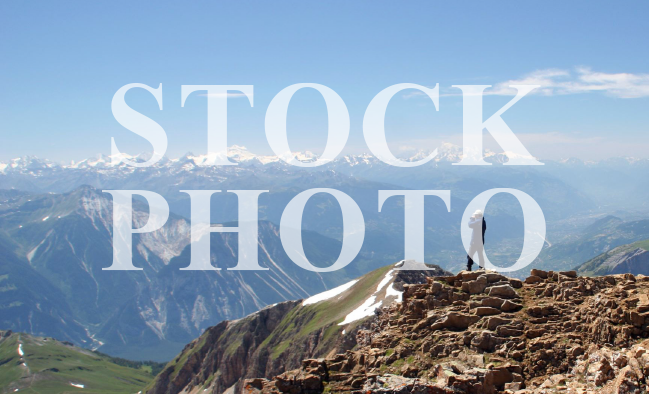Image licence rights - what to look out for
Visual elements like photos and infographics add value to your presentations. They can support and enhance your content. They can convey messages instantly. They can make a presentation more appealing and interesting and provide visual orientation. Many companies define their own visual language as part of their corporate design. Many also have their own image database with a selection of very good photos that they own. Still, you might be faced with a situation where you have to spend time searching elsewhere for the right picture.
Beware of photo stock pitfalls
First, you need to find the right image. This can involve a lot of effort. Where do you even start? Then you need to check that the image quality is as decent as advertised. Does it fit your brand and the message of your presentation? Even if you think an image is perfect, you then have all the legal aspects to consider. What’s permitted? What’s not allowed? The issue of image selection is complex.
The right to use an image

This is where it gets even more complicated as we outline the completely different levels and perspectives for image rights.
To begin with, there are the photographer’s rights regarding the image itself, to stop it from being stolen, copied or displayed without their official permission. These factors are protected by international law, as well as individual countries and regions having their own laws and regulations. Then there’s the photographer’s right of personality, fulfilled by crediting the origin of an image. Distorting or changing an image in any way is also prohibited by law. And, of course, there’s standard copyright as an intellectual property law, and license rights. Plus, different levels of rights by agreement with the individual agency.
Photo stock agencies
Most often you’d search for images via a photo stock agency. These can roughly be divided into macrostock, midstock and microstock agencies. Macrostock agencies tend to deal with rights-managed (RM) licenses. They’re usually exclusive images, of premium quality and taken by professional photographers. You buy the right to use them just once. Microstock agencies tend to offer royalty-free (RF) licenses. After purchasing the image (often by amateur photographers), you can use it indefinitely with no specified limits on purpose for usage. In parallel to this are topic-oriented image agencies ‒ universal agencies, press agencies and specialist photo stock agencies. The latter are those that actually specialize in themed photos, such as food, sport, business. Finally, there are loads of free agencies.
Getty Images, Sipa Press or Corbis are examples of macrostock agencies. Shutterstock or Fotolia are midstock agencies. iStock, Dreamstime, Photocase, Pixelio are called microstock agencies. To give you an idea of costs, macrostock agencies tend to start at around 130 USD per image, midstock charge anything between 15 to 130 USD, and microstock will set you back between two and 15 USD. But look at each case individually and ask a specific agency for a quote before you commit to your purchase.
Licenses and rights
To be on the safe side, it’s best to answer a few key questions honestly to make sure you’re on the right side of the law regarding your chosen pics:
- Did you purchase the images correctly for all the channels you intend to work with? Did you read the fine print, e.g., specifying usage time periods or type of ownership?
- Does the agreement stipulate that you have to credit image origins? If so, did you? This is a common requirement especially for editorial publishing. It’s not enough to obscurely list them in the metadata.
- What’s shown in the picture? Are people recognizable? Or trademarks, brand names or works of art? Anything a third party could lay claim to? Be careful here and either clarify these rights in advance or touch up the image to eliminate those elements.
- Are the people in the picture aware what the photo will be used for? Make sure you have their permission, for instance, via signed forms.
- Were all outdoor shots taken while on public grounds?
- If you’re an advertising agency, remember to list your clients as licensees. Otherwise, you might be in for a shock when the photo stock agency doesn’t recognize them as authorized users, and your clients aren’t going to appreciate that very much either.
- Will the images be used again or in a different context? For example, in a print brochure made available as a downloadable PDF? If so, clarify if the additional use would be considered as a new item for purchase or just a “citation” of the original item. If it’s latter, then all is fine.
Every photo stock agency has its very own license rights and terms and conditions. Tedious as they might be, you need to read them!
Infringing image rights is easily done, but if you do so and receive a warning, the cost can be high – very high. If, legally speaking, you’re a company, and not a private entity or person, then there is no such thing as “on the fly” or “just this once” for all your PowerPoint presentations. Don’t even think along those lines. Legally, you won’t get away with it.
We’re not providing official legal advice here – the world of image usage rights is far too complex. This post is to make you aware of the possible risks of not purchasing and crediting images in the right way. The next time you choose an image for your presentations and other communication channels, keep the above tips in mind, and contact the specific photo stock agency about the exact image you want to use and how. The agencies and their lawyers take image rights very seriously. Please do the same – it will only take a moment.